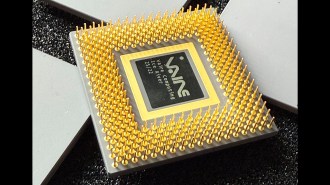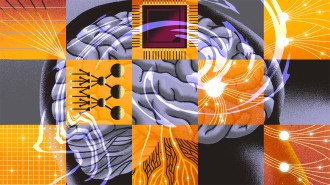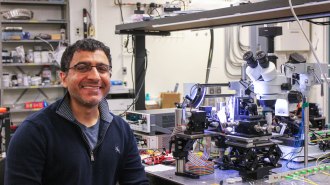Asia: One reason America can’t afford to jettison good teachers
I just listened to a disturbing news story on National Public Radio, this morning, about how budget cuts may force a Los Angeles middle school to fire half of its teachers. The riffed staff — reported to be mostly young, passionate and well educated — will be replaced with more senior teachers who had initially turned down a chance to teach at this innovative start-up (but who will now come anyway after losing their jobs at other LA. schools).
One anecdote that pointed to the school’s inventive approach to turning low-income inner-city kids on to math: a staff-written horror video starring the seventh-grade faculty. A “crazed kidnapper named Pythagoras” gives ransom messages that can be solved only through the use of math. The kids loved the story — and the Pythagorean Theorem became indelibly etched into their gray matter.
I can understand California’s budgetary dilemma, but the problem is that the real losers when schools sideline good teachers — young or old, new or experienced — is always our children. And can we really afford to jettison caring, passionate and well-trained educators at a time like this?
“This” being the waning age of U.S. economic and entrepreneurial supremacy. Or at least that’s the rather compelling picture that venture capitalist Bob Compton has been painting in some documentaries that he’s developed over the past four years. He and I spoke just yesterday about the American educational imperative confronting today’s youth. It’s the theme of the first of his films, “Two Million Minutes.”
Haven’t heard of it? No surprise. It hasn’t had a theatrical release and film festivals that Compton sent it to told him thanks — but no thanks. I screened it, a few weeks back, and would argue that viewing this provocative documentary is worth the investment of every minute.
Its title points to the time between eighth-grade graduation and the end of high school. During this brief period, students must hone the skills and acquire the knowledge that will prepare them for college, their entrée to professions that will define the 21st century economy.
The scary message in this film: U.S. students don’t spend nearly as much time in the classroom or on homework as do a large number of their peers in India or China. They also take fewer math and science courses. And they aspire in far smaller numbers to careers that depend on a proficiency in science and math.
The result, Compton’s documentary concludes: “Compared to the U.S., China now produces eight times more scientists and engineers, while India puts out up to three times as many.” Owing to the lower cost of living in their countries, these Asian professionals work for less money than their western counterparts, which makes them very attractive to high-tech employers the world over. Also attractive to employers, especially in the United States: There’s no shortage of these highly trained professionals in Asia — while there is in some parts of America.
Compton first encountered the East-West contrast in high-school education while hosting a dinner for 100 software engineers in India. He had anticipated spending a boring evening with nerds. Instead, this Harvard educated businessman was shocked to see how “remarkably well-rounded” all of his guests were. “They knew more about American and European politics than I did,” he said. The same was true for European and Chinese history. They could carry on a deep conversation about Shakespeare’s plays or the economic marketplace in which their products would compete.
When he asked how they came to be so knowledgeable about so much, they all gave the same answer: “This is what we learned in high school.”
So the Memphis-based businessman extended his one-week trip into a four-week stay. And started visiting urban Indian schools. Which proved an ever bigger eye-opener.
While visiting a first-grade class, he asked a single question: What would you like to be when you grow up. And the answer: engineer, engineer, scientist, cardiologist, astronomer, scientist, engineer, teacher, fighter pilot, army officer, engineer, engineer, engineer. “I was stunned,” he now recalls, at how revered science and technology were among children as young as five and six.
Back in the States, he asked the same question in 10 first-grade classrooms. “And I heard lots of interesting careers — everything from pro-wrestler to rock star and celebrity,” he says. “But two careers never mentioned were engineer and scientist.”
Urban Indian and Chinese schools also make specialized science and math classes mandatory. In India, Compton notes, from middle school on students must take four years of physics, of biology and of computer science. Moreover, he learned, teachers aren’t considered for such classes unless they have both undergraduate and graduate degrees in the field they would teach. At least this is true for private schools, which educate half of India’s urban students, he notes.
On a whim, Compton asked one Indian principal what she would consider him qualified to teach. “Second grade,” she said. “You’d be good with young children.” But he lacked the training for more advanced classes, she pointed out — especially at the middle- and high-school levels.
Bottom line: The best schools in India and China have much more rigorous academic programs than America has and they set much higher standards for graduation. Overall, China and India each graduate some four times as many high-school students each year. The fact that there aren’t even enough colleges available to absorb them all is what contributes to the high number of these Asian students applying to U.S. universities, especially for science and engineering programs, Compton says.
The difference in the nations’ academic expectations was the focus of “Two Million Minutes,” which followed a pair of boys and girls throughout their senior year in India, China and a highly ranked school in Indiana. Frankly, the film makes Americans look like real slackers.
Of course, Compton’s film is anything but a statistically significant sampling of college-bound kids in any of these countries. And there are other sources out there, such as James Tooley’s new book, “A Beautiful Tree,” that find Chinese or Indian students who must rely on public education might envy even poorly financed, inner-city U.S. schools. Their experience, as Tooley recounts it, departs greatly from the education garnered in the high-priced private schools that the Asian children in Compton’s film had attended.
But the message Compton brought home from his travels — and that emerges from his film crew’s interviews with these kids, their families, their teachers and entrepreneurs — is that there is a growing cultural divide between the United States and the huge middle classes in the world’s two most populous nations. Where Americans prize celebrities and leisure pursuits, India and China prize intellectual pursuits and are investing in new colleges, research parks and small-business incubators — centers that support innovation and high-tech start-up companies.
In these Asian nations, Compton says, research and its practioners are held in much the same esteem as sports and athletes are in America. Indeed, that has been the experience of one Indian-born IT entrepreneur, now working in North Carolina, who was interviewed for “Two Million Minutes.” Observed this engineer, with a smile, every time he goes back home he’s treated like a “rock star.” (Although I suspect a Bollywood star, or certainly a soccer star, would give him a run for the celebrity money.)
Still, America’s complacency about its place in the world is dangerous. To remain a leader, it has to invest more on education generally — especially the training and support of elementary- and secondary-school teachers. Students from Asia and elsewhere will not only compete with their U.S. counterparts in the classroom, but increasingly in the marketplace. And there’s no certainty that we in America are preparing our students to handily win those competitions.
But for an American educational renaissance to be effective, support must start at home — literally. In discussions over the dinner table we have to prize educational achievement, the media have to cover educational triumphs and contests as they now do local sports, parents have to push their kids to do all they can, and taxpayers have to stop grousing about the costs of budgeting for legions of energetic, passionate, well-trained specialists in local classrooms.
Compton has started putting his money and time into campaigning for just this. But unconvinced that America’s ready to take the global view in this regard, he has already begun warning his teenage daughters that they might graduate college only to find that — at least in the high-tech sector — their best career move will require emigrating to some industrial park in Asia. Or being outsourced, by their Chinese employer, to some tax haven — perhaps a rust-belt inner city in the economically depressed American Midwest.







